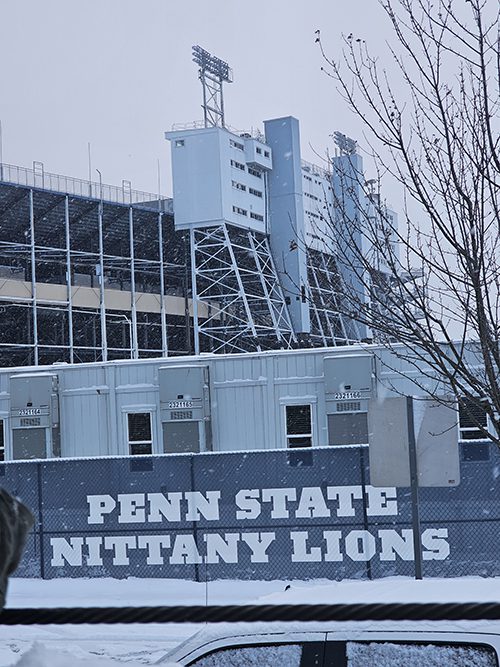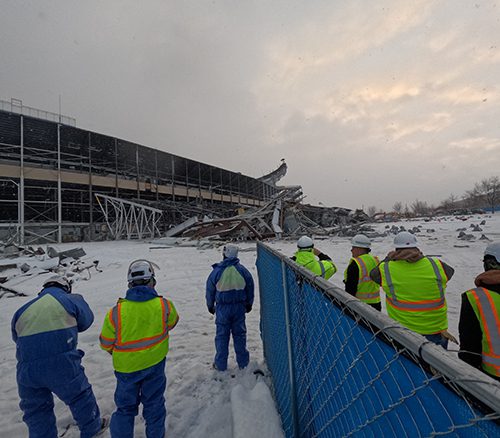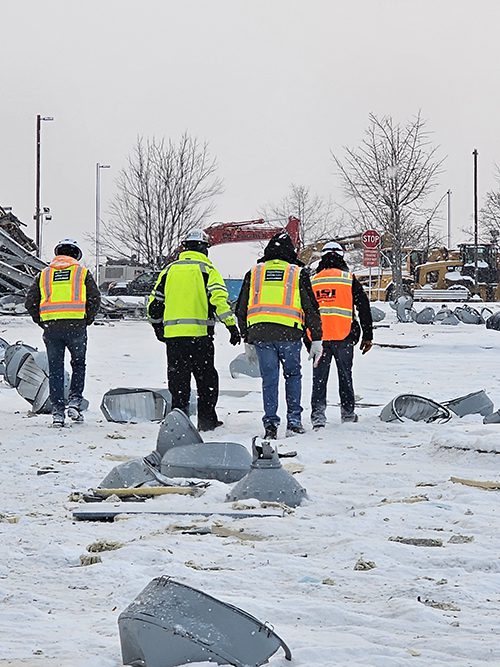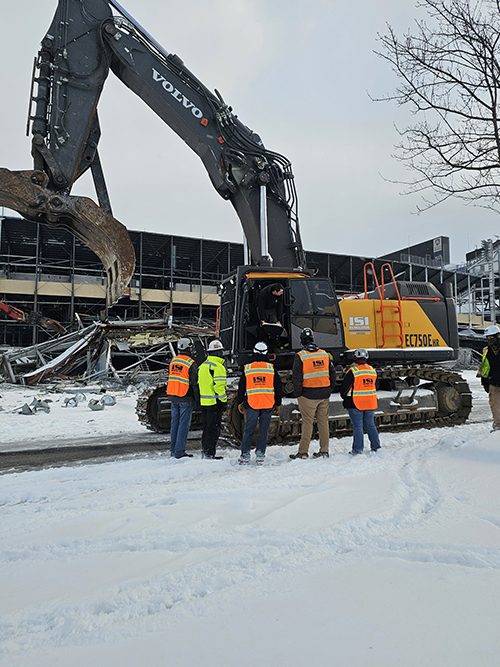Successful demolition projects require more than just technical expertise and machinery. They demand precise planning, clear communication, and seamless coordination among all stakeholders to ensure safety, efficiency, and progress. Whether working on a small structure or a monumental project, these principles remain the foundation for success.
The recent partial demolition and renovation of Penn State University’s Beaver Stadium serve as a prime example of how these elements come together. This massive undertaking required early collaboration, meticulous organization, and strong leadership to overcome challenges and stay on schedule.

Setting the Stage for Success
Thorough planning like this makes all the difference—when every detail is accounted for in advance, success becomes much more achievable. As Paul Harkins aptly said, “Thorough planning like this makes all the difference—when every detail is accounted for in advance, success becomes much more achievable.”
One of the key aspects of the Beaver Stadium project was the creation of a tri-venture construction management team involving AECOM Hunt, Barton Malow, and Alexander. This tri-venture also signed an OSHA Strategic Partnership agreement, reinforcing their commitment to workplace safety and efficient project execution.
Before any demolition could begin, the partners worked closely with Penn State University to ensure every step of the process was meticulously planned and aligned.
Thorough planning like this makes all the difference—when every detail is accounted for in advance, success becomes much more achievable.

Penn State’s proactive involvement in the planning stages proved to be a cornerstone of the project’s efficiency. The university’s role went beyond providing oversight. By actively cleaning out the project site within a two-day period after the last home game of the season, Penn State set the tone for collaboration and ensured that every partner remained aligned on timelines and objectives. Effective communication was emphasized from the start, helping the team identify key milestones and address challenges before they arose.
Advance Preparation: A Year in the Making
Bringing all stakeholders together more than a year in advance allowed the team to tackle potential roadblocks head-on. This forward-thinking approach meant that all components of the project were discussed, coordinated, and approved well before demolition commenced. ISI Demolition, a key partner, used this time to align with mechanical, electrical, and plumbing trades ahead of schedule, ensuring a smooth transition into the execution phase.
ISI Demolition proved its value throughout the initial planning and bidding phases, as well as during the demolition itself. Through our collaborative preparation, we were able to complete the Phase 1 of demolition 28 calendar days or 20 working days ahead of the planned scheduled durations. For a project like this, where the schedule was tightly constrained due to the football season, that level of coordination was invaluable.
Days Returned to the Project Schedule
Timelapse of the Project
Tackling Unique Challenges
The Beaver Stadium press box and upper bowl demolition presented several significant challenges, requiring precise coordination and expert execution. One of the most critical aspects was specialist abatement, including asbestos removal, which had to be scheduled around Penn State football games to minimize disruption. This careful timing required close collaboration and adaptability to tight schedules.
In addition to abatement, the implosion phase of the project demanded exceptional speed, efficiency, and attention to detail. Several key factors played a role in ensuring a successful implosion:
- Structural Height: The sheer size of the stadium posed unique challenges, requiring extensive preparation and strategic execution.
- Weather Conditions: The team had to account for potential delays caused by dense fog or lightning, which could have impacted safety and visibility. We also had to overcome high winds and a snow storm on the day of demolition.
- Security Measures: Ensuring a controlled environment was essential. The site needed to remain completely secure to prevent unauthorized access and maintain the integrity of the operation.
To handle the technical complexities of the implosion, ISI Demolition partnered with Controlled Demolition Inc. (CDI), a leader in the field. This marked ISI’s first implosion with CDI as a subcontractor, reinforcing the value of working with top-tier industry specialists. The collaboration ensured that every aspect of the implosion was carefully planned and executed, setting a high standard for future large-scale demolition projects.
Lessons in Leadership and Teamwork
The Beaver Stadium project highlights the importance of communication and collaboration at every stage. As Paul Harkins aptly said, “It’s proof that when everyone works together, things get done.” From Penn State’s upfront commitment to the tri-venture’s ability to streamline processes, the project serves as a model for effective project management.
Looking ahead, the lessons learned from Beaver Stadium’s demolition phase emphasize the value of early involvement. Unlike other projects where delays in planning can create unnecessary obstacles, this project demonstrated how proactive coordination allows teams to anticipate challenges, make informed decisions, and execute efficiently. The ability to align stakeholders early in the process ensured that timelines were met and disruptions minimized, showcasing the impact of strategic foresight in large-scale demolition efforts.

Moving Forward
With Phase 1 nearing completion, the focus now shifts to the build-back in the remaining Phase 1 and Phase 2, as well as the final work on the west side stands in Phase 3. By maintaining the same level of communication and teamwork, the project is poised to continue its trajectory of success. As Beaver Stadium transforms, it stands as a testament to what’s possible when planning, communication, and collaboration take center stage.
About ISI Demolition
ISI Demolition was founded in 1990 with a simple premise: Operate each day with the highest level of excellence. By following this guiding principle, it is no coincidence ISI Demolition consistently meets our clients’ goals for timeliness, efficiency, and safety. ISI Demolition works hand-in-hand with national, regional, and local contractors, developers, and commercial real estate clients. We take time to understand project goals and devise individually tailored demolition plans to meet those goals on time and on budget.
Just think of what you can accomplish when there are no obstacles!


